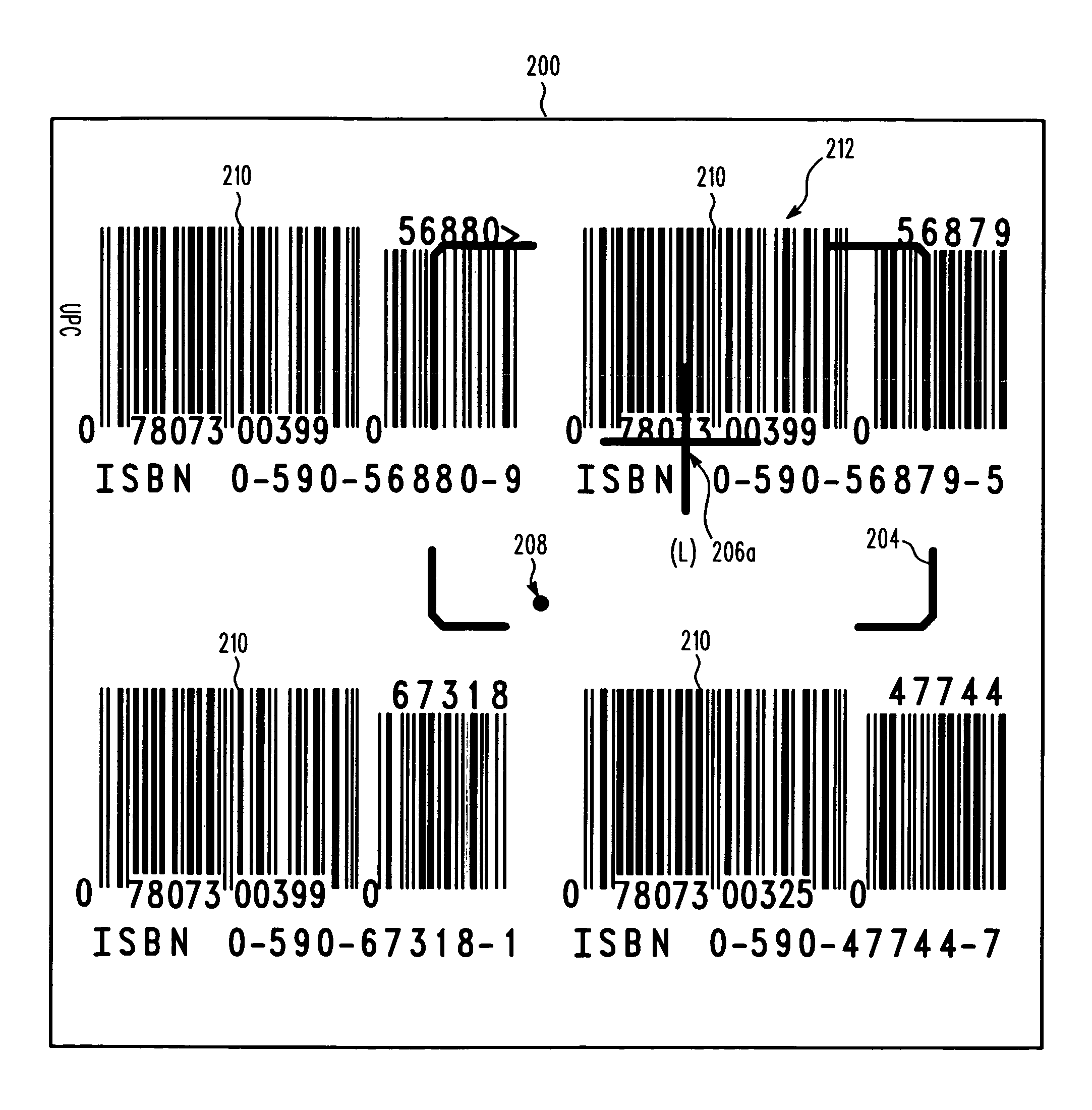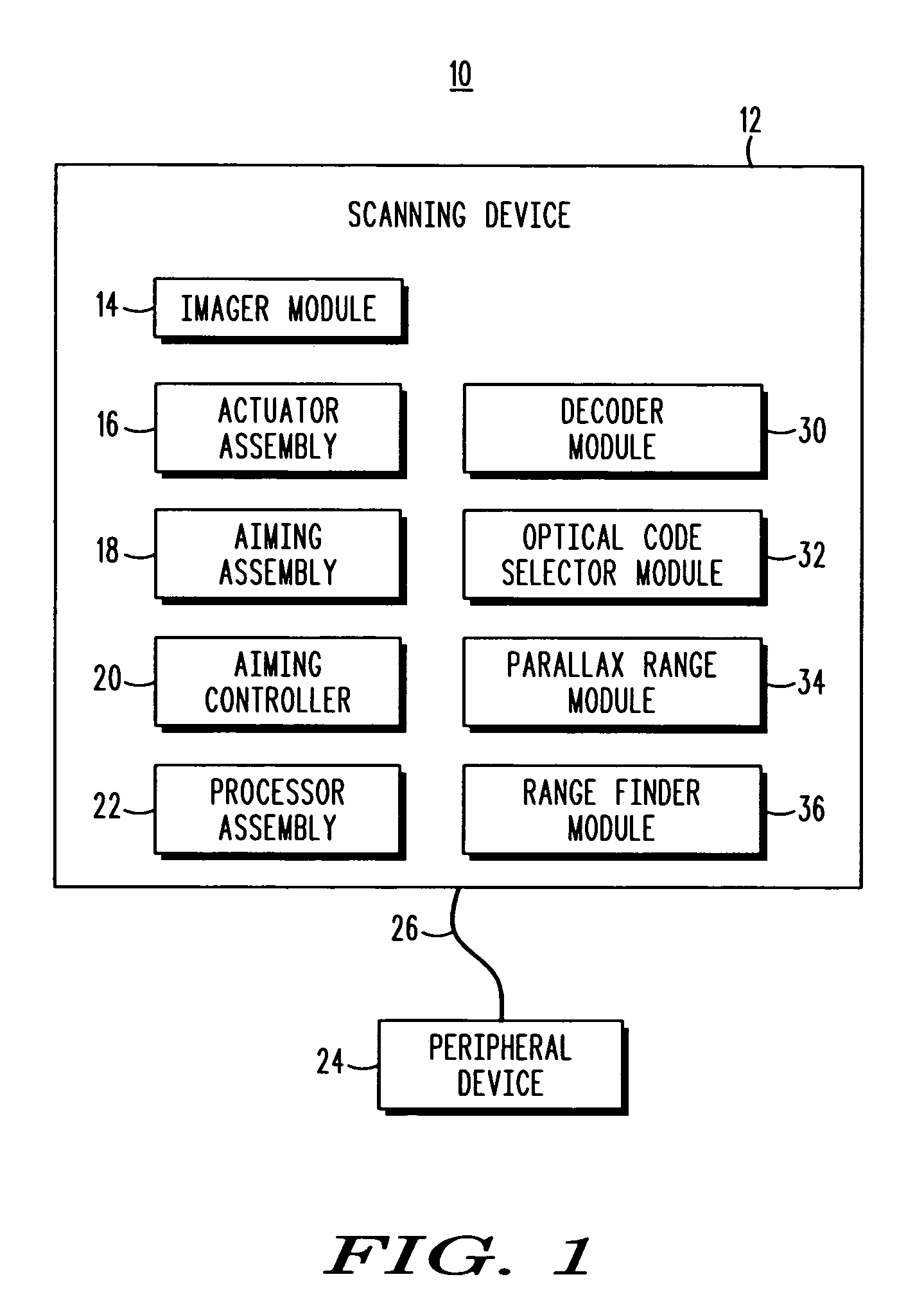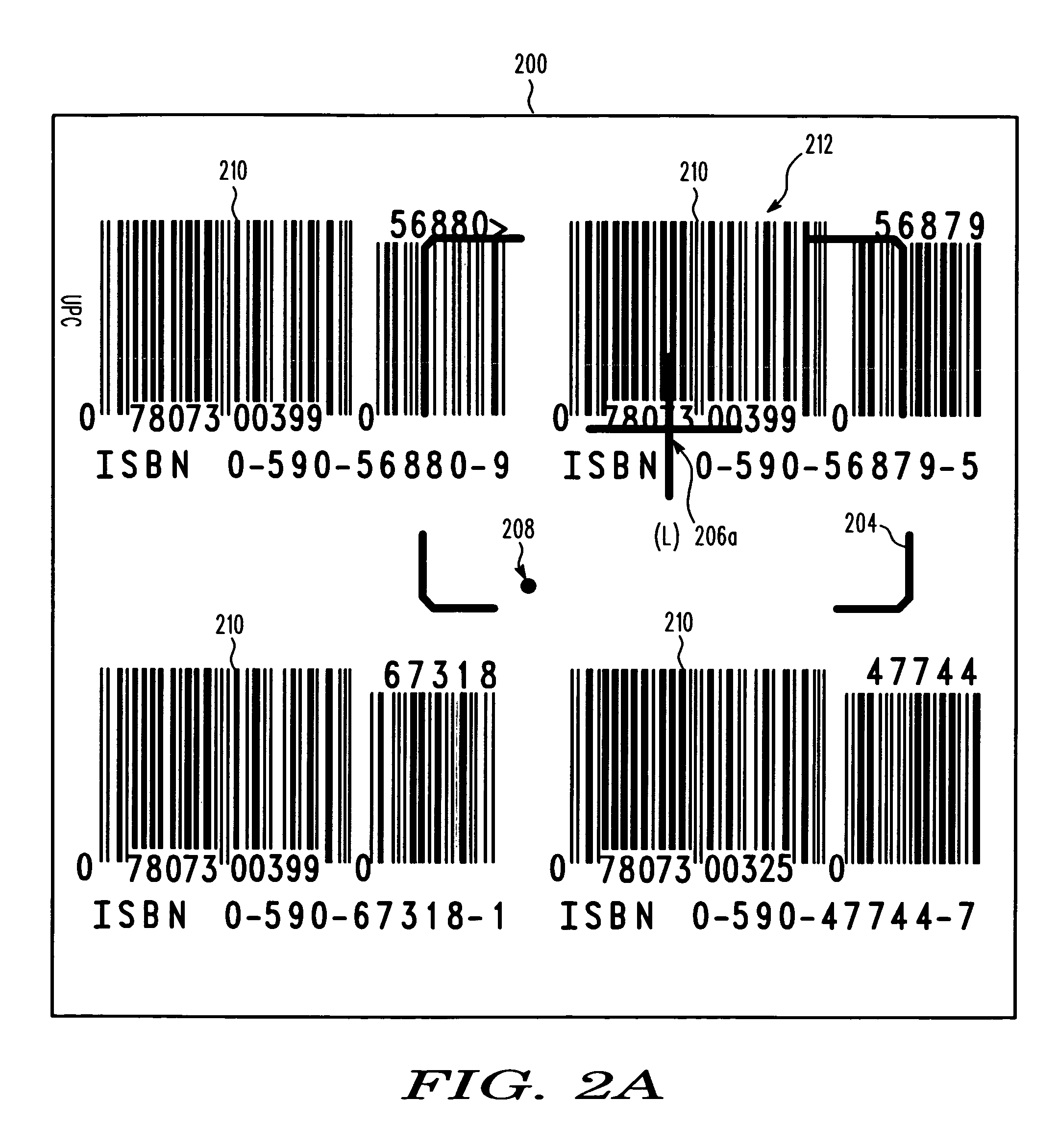Imaging reader and method with enhanced aiming pattern detection
a technology of aiming pattern and imager, which is applied in the field of aiming pattern detection, can solve the problems of not being able to read the desired optical code, the aiming pattern cannot be readily detected by the imager module, and the laser beam intensity cannot be increased too much and/or for too long without violating human eye exposure laser safety limits, etc., to achieve the effect of increasing the laser beam intensity, reducing the intensity, and reducing the brightness of both the aiming patterns
- Summary
- Abstract
- Description
- Claims
- Application Information
AI Technical Summary
Benefits of technology
Problems solved by technology
Method used
Image
Examples
Embodiment Construction
[0025]In FIG. 1, an optical code scanner system 10 for reading an optical code during a reading mode is shown, where the system 10 includes an imaging reader or scanning device 12 for reading an optical code, which may be, for example, a bar code symbol, a UPC / EAN symbol, a one-dimensional or multi-dimensional symbol, a textual code, etc. A “read” or “read operation” refers to imaging and decoding the optical code, but may further be understood as imaging and processing the optical code, such as for performing character recognition on the imaged optical code, transmitting or further processing the imaged optical code.
[0026]The scanning device 12 includes an imager module 14, an actuator assembly 16, an aiming assembly 18, an aiming controller 20, and a processor assembly 22. The scanning device 12 may be in communication with one or more peripheral devices 24, such as a keyboard, a display, a printer, a data storage medium, e.g., including storage for application software and / or dat...
PUM
 Login to View More
Login to View More Abstract
Description
Claims
Application Information
 Login to View More
Login to View More - R&D
- Intellectual Property
- Life Sciences
- Materials
- Tech Scout
- Unparalleled Data Quality
- Higher Quality Content
- 60% Fewer Hallucinations
Browse by: Latest US Patents, China's latest patents, Technical Efficacy Thesaurus, Application Domain, Technology Topic, Popular Technical Reports.
© 2025 PatSnap. All rights reserved.Legal|Privacy policy|Modern Slavery Act Transparency Statement|Sitemap|About US| Contact US: help@patsnap.com



